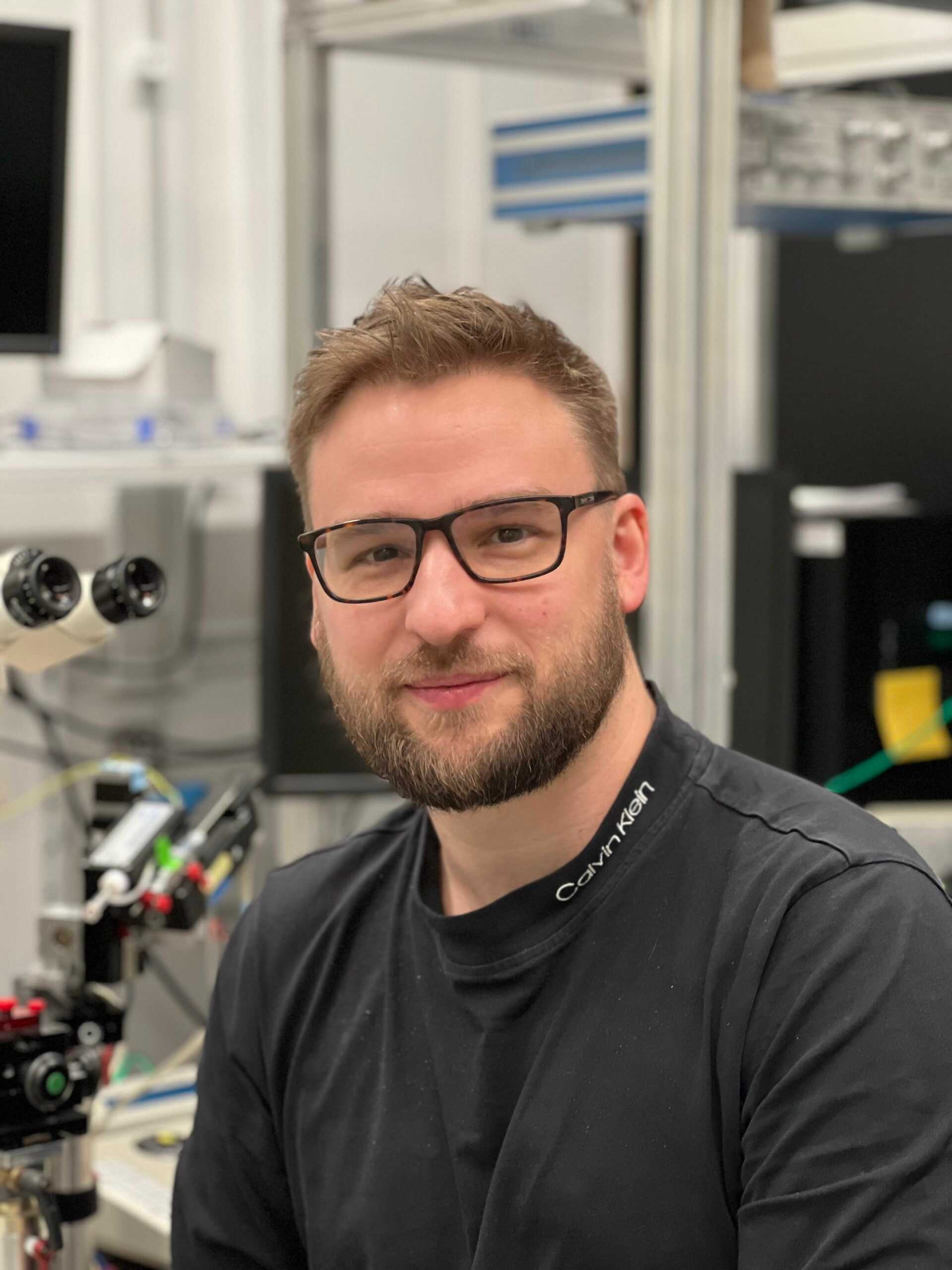LAURENCE PICTON

Spinal cord tension dynamics and central proprioception
Erling-Perssons Stiftelse
Movements underlie the expression of all animal behaviour
Proprioception – our ‘sixth sense’ – provides online feedback on our movements and is essential for the successful execution and control of motor behaviour. Our understanding of how different proprioceptive feedback pathways from across the whole body contribute to motor control remains incomplete but is critical for understanding how behaviour is generated.
In mammals, proprioceptive sensory neurons are thought to exist only in the periphery, in muscles, tendons and joints. However, the spinal cord is itself under tension at rest, and is stretched and distorted in complex, yet coordinated ways during behaviour. Increasing evidence across species suggests that these tension changes can be detected by centrally located (intraspinal) proprioceptors as an important source of feedback. However, this idea has never been tested in mammals. The discovery of piezo2 as the principle mechanosensitive channel in proprioceptors provides a unique opportunity to test this radical, yet scientifically grounded, idea for the first time.
This project will test this hypothesis directly using a range of powerful electrophysiological, imaging, and genetic techniques. Our preliminary data has identified mouse spinal cord neurons expressing mechanosensitive piezo2 channels. This project will reveal the mechanical sensitivity of these neurons and link their activation to behaviourally relevant spinal cord movements. The team will also assess how intraspinal proprioceptors are functionally integrated in the locomotor circuit, and by genetically deleting piezo2 in spinal cord neurons, will reveal their role in motor control and behavioural flexibility.
The identification of a central source of proprioceptive feedback located entirely within the mammalian spinal cord would transform our understanding of proprioception and will for the first time integrate CNS motion dynamics as a mechanism for the control of motor behaviour.
